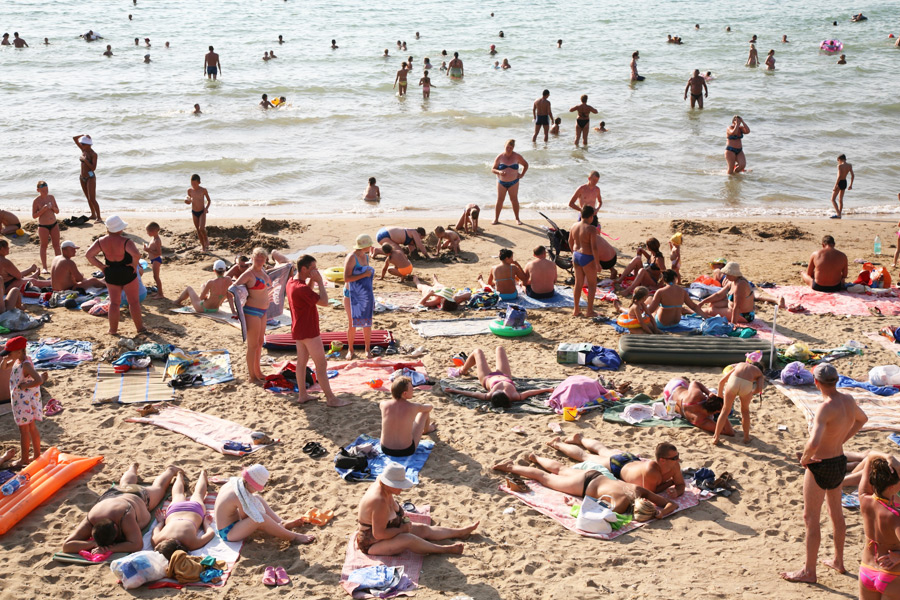Solutions for Hamptons Beach Overcrowding

Have you had to fight for a slice of sand at the beach this summer? There was a time, before the Hamptons became uber-famous, where during the dog days of summer you could make your way to one of the area beaches and easily find an excellent spot to chillax. It seems like those days are gone forever.
Claiming your piece of beach real estate can be a challenging process. I liken it to a pod of walruses fighting for the choice spot on a small coastal outcrop. Luckily, unlike the walruses, who often engage in battle for their right to sunbathe, there have been no incidents of serious bodily harm in the Hamptons this summer. So isn’t this the best time to be proactive…before an overcrowding beach crises occurs?
We are a group of very civilized people in the Hamptons. Surely we can devise a way to limit the maximum number of occupants at the beach at any given time. For safety reasons, restaurants are required to post the maximum number of patrons they can accommodate, so why can’t the beaches?
Accordingly, if there were a shark sighting, a title wave or any other emergency at the beach, too many people could result in widespread panic, and when that happens…people get trampled. This type of uncontrollable behavior occurs at soccer games, concerts and other events all the time. Wherever there are too many people occupying a single area, there is the real chance of serious danger.
The standard minimum allowable beach space should be established at 36 square feet per person. This is enough room (6’ x 6’) for a person to spread out a towel, cooler and other beach accessories and still have room to evacuate the beach in case of an emergency. Each area can be roped off and a number assigned. This formula will allow all East End beaches to calculate the maximum number of beachgoers permitted.
Here’s how the system works: If you are attempting to claim a spot at Ocean Road Beach in Bridgehampton and it has exceeded its capacity, there will be an electronic sign that might read “Beach Full—66 spots remaining at Indian Wells Beach in Amagansett.” If you arrive in Amagansett too late to get a spot, another sign might read “Beach Full—82 spots remaining at Main Beach in East Hampton.”
Airports have effectively used this type of system for years to let drivers know how many parking spots remain on each level or lot. And of course, once someone leaves the beach, that spot then will be reflected as available on the electronic sign.
Elevated social status will not gain any benefit in the system. And there will be no reserving spots for people who have not yet arrived. This isn’t like someone going to the movie theater early and then saving multiple seats for their friends who show up at the last minute. There will be none of those types of shenanigans on the East End beaches.
Another benefit of limiting the number of beachgoers is reducing the stress of the beach resources. Fewer people equals less carbon footprints in the sand. And of course, limiting the number of beachgoers also increases the ability of the lifeguards to monitor, control and respond to situations.
This is the only logical way to control beach overcrowding. If there are no beach spots available, there are many other things for visitors to do in the Hamptons. Maybe use the free time to visit the local shops, sample some great food or see some of the many landmarks. Spend some money, for crying out loud!
We can even run public service announcements on the local stations: Hear us good, Hear us loud, Protect our beaches, Don’t overcrowd!



